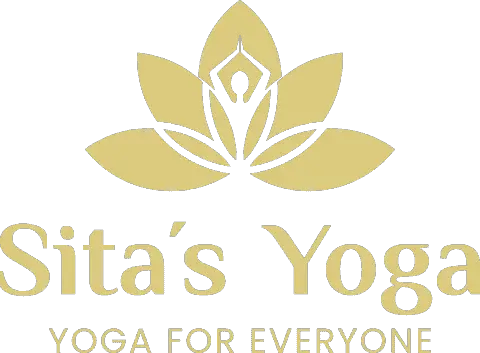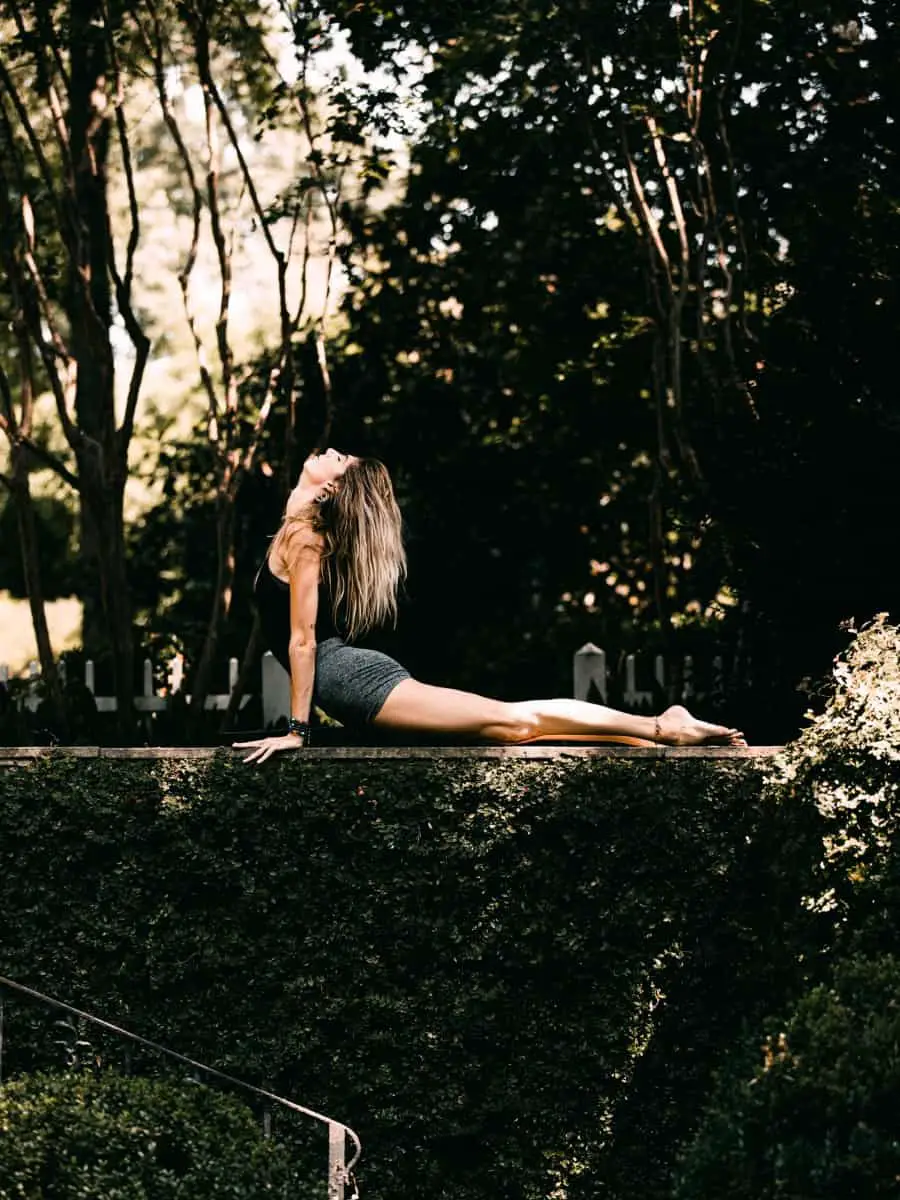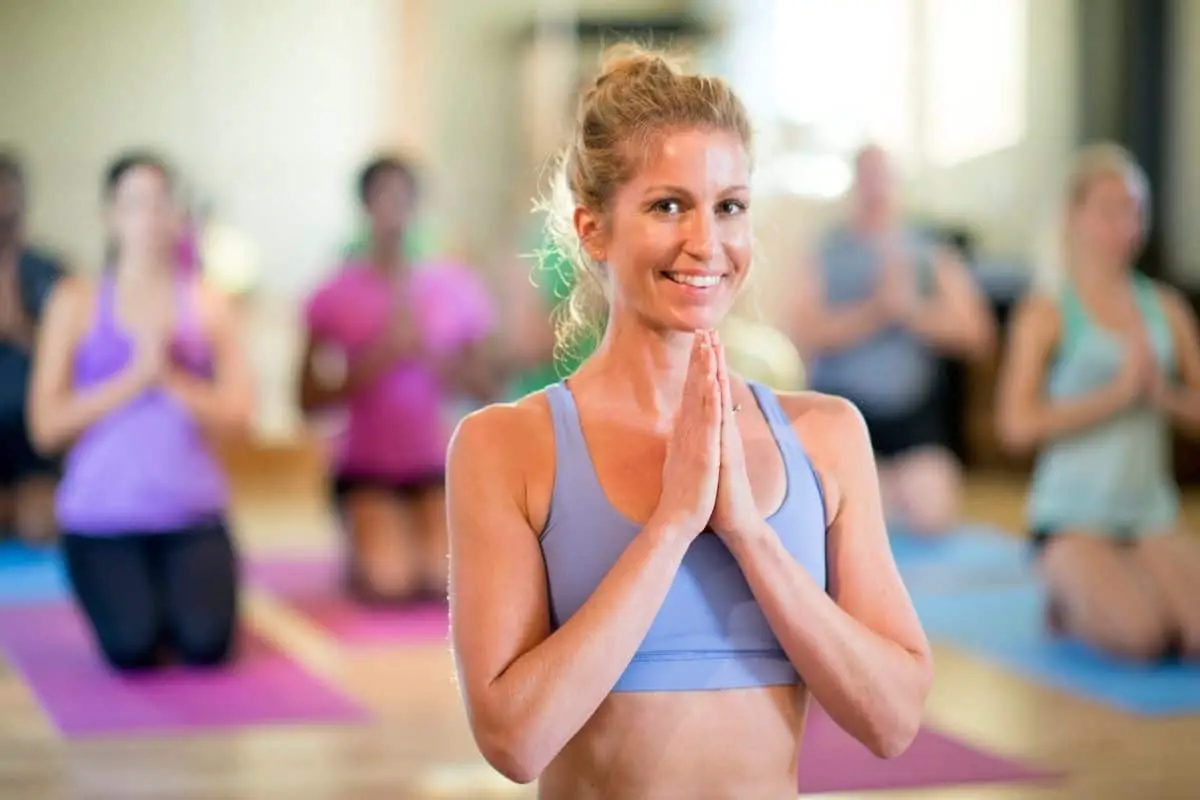The Cobra pose (Bhujangasana) is common and highly beneficial. But if you cannot do the pose without pain, you will either skip it and miss out on its benefits or, worse, injure yourself. What are the reasons you have a hard time doing the Cobra?
The reasons you cannot do a Cobra pose begin with not using your core. Other common problems include overextension and improper placement of your hands and feet. In most cases, simple adjustments will correct the problems. However, sometimes your body is signaling that you are overdoing it.
Read on to learn which muscles are involved in the Cobra asana. Understanding how your body functions is crucial to using your core correctly. Along with seeing what you might be doing wrong, you will also get pointers on what to do instead and consider some alternative asanas and modifications to the Cobra that might help you.
How Does the Cobra Pose Work Your Body?
Knowing which muscles and joints the Cobra works on will help you understand why you are having difficulties doing the pose correctly.
Muscles
In the upper body, several groups of muscles are being engaged:
- The spinal extensors, which are connected to the back of the spine, are contracting to extend your spine.
- Muscles involved in respiration, the serratus posterior inferior and superior, are being worked.
- Both your abdominal and the psoas major muscles in your lower back are actively working as you lift your torso.
- The muscles in your rotator cuff provide stability for your shoulder joints.
Even though you are lying on the ground, your legs are also active. Specifically, the hamstring muscles, as well as the muscles around your thigh, collectively known as the adductors of the thigh, work to rotate your hip. Thigh muscles work to extend your knees, and calf muscles help you flex your feet.
Finally, pronator muscles in your forearm provide support for your elbows and shoulders.
Joints
The Cobra pose also uses numerous joints. Since joints are what allow us to move, any movement we make requires the use of them. The Cobra asana requires us to use all three types of joints:
- Hinge – We don’t use our knees in this pose, but we do use our elbows.
- Pivot – Even though we don’t move our head side to side, we still use the joints in our neck as we lift.
- Ball-and-socket – Your shoulder and hip joints are also utilized in the Cobra pose.
A simple description of this asana would be that you lie on your stomach and lift your torso. Hopefully, this explanation of the muscles and joints used lets you see that the pose is more complicated than it looks.
Benefits of the Cobra Asana
The benefits of this asana are plentiful. They include:
- Increased flexibility
- Strengthened arms, shoulder, and spine
- Improved blood circulation, especially in the pelvic region of the body
- Eases symptoms of asthma because the pose opens the chest, helping to clear the lungs
- Helps with digestive and menstrual problems (and all that stretching can help trim belly fat!)
Our parasympathetic nervous system, also known as the rest and digest system, helps slow the heart rate while increasing activity in our intestines. The Cobra asana activates that system, causing us to feel calm. For this reason, many instructors feel the Cobra is an excellent stress-reduction pose.
Tip: Although the Cobra pose strengthens your spine, those suffering from chronic back pain might want to talk to their physician or physical therapist before attempting this asana.
You Are Not Using Your Core
Remember that in Yoga, the core is crucial. Your core provides stability to the entire body. This stability comes from five components:
- Strength
- Endurance
- Flexibility
- Functionality
- Motor control
People often focus on the first three—in Cobra; the biggest focus is on flexibility. However, without understanding how the different parts of your body function, it is more difficult to do the asana correctly, thus limiting your motor control. Once you have worked on those, then you can focus on increasing your flexibility.
If you approach Cobra as a position where you see how high you can lift your torso without understanding how all the parts work together, you will not achieve motor control.
Remember that flexibility will come with repeated practice and focus first on getting the small details right.
When you do not use your core, then you are not supporting your back. As you start the Cobra pose, focus on your core by doing the following:
- Full exhale to tighten your abs.
- Squeeze your belly button towards the spine while exhaling.
- Lengthen your tailbone.
- Press your toes into the ground.
- Squeeze your legs together. You are essentially trying to create one leg by squeezing legs, big toes, ankles, knees, and thighs together.
You Are Placing Your Hands Too Far Forward
Correctly doing the Cobra begins with where you place your hands. Before you lift up, your hands need to be under your shoulders and next to your chest. Aim for your thumbs to be in line with your nipples.
If you find that your shoulders are scrunching up toward your ears, then your hands are too far away from your torso.
Also, keep your fingers spread and your middle finger pointing forward.
You Are Lifting Your Shoulders
By lifting your shoulders, you are lengthening your body, but not your spine nor relaxing your shoulders. To help you keep your shoulders down, push them down, away from your head as much as possible. Then press them back.
If you lift your shoulders, you will not be able to open your chest fully. You also take the risk of hurting your lower back. This is because lifting your shoulders causes your weight to be shifted into the small of the back.
You Are Hunching Forward
Some of us are so used to hunching over a desk that we aren’t really aware of it. It is possible that your shoulders are leaning forward because that is practically their normal position. Hunching forward does not allow you to open your chest and lungs fully.
Check your hand position—most likely, your hands are too close together. Spread them a little more and shift your chest forward just a little. You should now be lengthening your spine while also opening up your lungs.
You Are Hyperextending Your Neck
You want your neck to be arched back gracefully to help extend your spine. However, it is easy to overextend the neck, which throws your head back. Also, hyperextending your neck stresses the muscles. Your trachea is also closed off, affecting your breath.
To maintain a graceful arch, keep a horizontal gaze (or look down slightly).
You Are Locking Your Elbows
If you are straightening your arms during the Cobra, you are locking your elbows’ joints, which reduces your range of motion. To see how this works, extend your arms, keeping your elbows straight, and move your shoulders. Now bend your elbows and notice the increased range of motion.
The same principle applies to your knees. When you bend them, you increase the range of motion of your pelvis.
So keep your elbows bent when you move into the Cobra pose. Then let your upper arm bone settle into the shoulder socket as you raise your torso. Once you have the backbend you want (or can comfortably handle), straighten your arms.
You Are Hyperextending Your Elbows
Your arms should be straight without hyperextending the elbows. If you overextend them, you will be compressing your lower back. This happens because some of the force created by your hands bypasses the upper arm and shoulders. Make sure your elbows are bent slightly.
The Danger of Hyperextension
Whether you overextend your neck, shoulders, or elbows, you risk hurting the joint. In addition, repeated hyperextension can damage the structures that support the joint, such as ligaments and cartilage.
It is better if you don’t develop a habit of overextending than having to break it later. To protect the joint, let the muscles do most of the work. After all, that is their job.
You Are Collapsing Your Chest
If you collapse your chest, you are compressing your trachea, which affects your breathing. Your chest needs to be lifted forward. Do this by raising yourself from the sternum’s top. However, do not push the front ribs toward the front. Bring the tips of your shoulder blades closer.
You Are Keeping Your Legs Too Far Apart
Your sacrum is the vertebrae at the end of your spine. It supports the spinal column and serves as the origin for several important muscles, including the gluteus maximus. If your legs are too far apart, this compresses the sacrum. Keep your feet hip-distance apart.
You Are Keeping Your Feet Too Close Together
If you are keeping your legs too far apart, do not overcompensate by keeping them together. This is especially true if you plan to rise to an extended Cobra. In that case, keep your legs hip-distance apart. That way, you decrease the pressure on your back. Remember to point your feet back and keep those heels pointing up.
You Are Clenching Your Buttocks
Clenching or squeezing your buttocks is natural, but doing so compresses the lower back. With some backbending asanas, doing so is helpful to support your back. However, since the pelvis is resting on the floor, you do not need to clench your glutes. If you catch yourself doing this, then roll your inner thighs.
You Are Lifting Your Hips
If you are lifting your hips, you will likely rely on your arms and legs to help you lift your back. The goal is to use the muscles in your back to maintain the lift.
However, your hips can be a good guide. Once your hips start to lift from the floor, stop lifting your torso. Keep your hips grounded. Do not overdo it—there’s always tomorrow.
Use a Partner for Guidance
A partner can provide assistance with the action of the pelvis. After you are in the Cobra pose, your partner should straddle your legs. Have your partner bend forward, gently grip the pelvis sides, with the thumbs pointed to the sacrum. Then have your partner spread your pelvis. Soften your outer hips and let your partner help you push your hip points closer to each other.
You Are Not Listening to the Signals Your Body Is Sending
People with certain medical conditions should avoid this pose, and if you have one of those conditions, your body could be telling you the Cobra pose is unsafe at this time.
Pregnancy
Pregnant women practice Yoga to improve sleep, reduce stress and anxiety, and strengthen and tone the body. However, poses that involve lying on the belly should be avoided. Instead of the Cobra, try the cow pose (Bitilasana).
- Have your hands and knees in the tabletop position.
- Knees should be directly underneath your hips.
- Have your elbows, shoulders, and wrists perpendicular to the floor.
- Your head should be centered with your eyes looking at the floor.
- Inhale. Lift your head and look forward. Your belly should sink toward the floor. When you exhale, return to the tabletop position.
- Repeat 10 to 20 times.
Another option is to stand up while practicing the Cobra pose. Do this by facing a wall and placing your hands on the wall. Then keep your elbows against the rib cage as you press against the wall and lean back. Next, pull your shoulder blades together and lift your collar bones up. Hold for 10 to 20 seconds.
Ulcers, Hernias, and Abdominal Pain
Instead of a pose that puts pressure on the abdominal area, opt for poses that stretch the abdomen without putting as much weight on it. Consider using Navasana, Twisting Child’s Pose, and Supine Twist instead.
Boat Pose (Navasana)
- Start by sitting with bent knees and feet on the floor.
- With your hands behind your knees, inhale, and engage the back muscles.
- Tilt backward as you lift your feet. Stop when they are about knee-high.
- Your arms should be parallel to the floor as you straighten your legs.
- After a comfortable exhalation, bring your feet down.
- Take a few breaths as you hold onto your legs, with your spine straight.
Twisting Child’s Pose
Add one of the many variations of Child’s Pose (Balasana). Here are several suggestions:
- Make a roll with a blanket and place it under your ankles so that they stay bent while resting on it.
- Use cushions under your head or hips or stack your fists to rest your forehead.
- Place your arms in front of you when you enter the pose to stretch your shoulders.
- Instead of putting your knees together, create a wide-legged version.
- After you get into the wide-knee pose, twist your torso, and bring your right arm toward the opposite side. Lower the right shoulder, extend your right arm so that it is parallel to the top of your mat, and then gently put your shoulder down.
Back Injury
The sad irony is that the Cobra pose has excellent benefits for your back, but if you have back problems, it is difficult to get them. If executed properly, the Cobra pose strengthens your pelvic muscles as well as the lower abdominal muscles. You will see increased flexibility and less stiffness in the back, as well.
There are several back injuries that might be signaling that you should modify the asana instead of doing the Cobra pose.
Facet Joints
Facet joint problems can prevent someone from being able to arch their spine backward. The facet joints connect individual vertebrae and provide stability to your spine. Your facet joints work in conjunction with ligaments to keep your spine straight and assist in your spine’s movements.
Not all facet joints are the same. The ones in your neck are capable of moving in many directions. As you move down your body, the facet joints become less able to turn and twist. The facet joints in your lower back have a limited ability to rotate. Whiplash is one common reason for pain related to the back and these joints.
A more common reason for facet joint damage is osteoarthritis. This condition is primarily caused as the cartilage that lines the facet joints wears out, leading to bones coming in contact, called bone articulation. This causes excess wear in the area where the bones meet and result in conditions such as bone spurs or swelling of the facet joints.
A properly designed exercise program can help you manage this condition. By increasing flexibility and strengthening your back, you are protecting spinal joints. If you have been diagnosed with osteoarthritis, any exercise program should be designed with your doctor.
If you are beginning to experience pain in the upper or lower back, especially if it radiates from the spine, these signs could indicate you should see a doctor:
- The pain is unpredictable and occurs irregularly.
- Pressing on the skin causes soreness (the muscles are tightening to protect the joint).
- Bending backward hurts (while bending or leaning forward does not).
- Nerve pain shoots the back of the upper leg.
- Sitting for a long time or riding in a car becomes painful.
Warning: If nerve pain shoots down the front of the leg, then you might have a herniated disk.
Spondylolisthesis
If one of your vertebrae in the lower spine slide forward (less often, backward), then you have spondylolisthesis. Causes for it include injury, stress from sports, and age. Symptoms can be minimal to extreme pain, depending on how much the vertebra has moved. Often people are not aware they have the condition until they receive a back x-ray.
However, if you are suffering from these symptoms, you might want to think about contacting your doctor:
- A pain radiating down the back and back of the thighs is common.
- Unlike with facet joint problems, sitting causes symptoms to disappear or lessen.
- Tight hamstrings, often leading to walking with bent knees and changes in your gait.
- Weakness, numbness, or tingling is another possible sign of spondylolisthesis.
The good news is that there are numerous treatments for spondylolisthesis, facet joint, and osteoarthritis, which will let you continue to exercise.
Sphinx Pose
This gentle asana is a great way to build up to a Cobra pose.
- Start by lying on your belly.
- Have your legs straight, shoulder width, with the tops of your feet on the floor.
- Push your tailbone down and roll your outer thighs to the floor. Doing so lengthens your lower back.
- As you lift your torso, keep stretching your tailbone toward your heel. Also, do not clench your buttocks.
- Lift your torso enough, so your elbows line up with your shoulders.
- Your forearms should be flat and parallel to each other.
- Finally, lift your lower belly slightly to distribute the curvature of your spine more evenly.
What Is Your Core and Why Is It Important?
Earlier you read about the core briefly, but since the Cobra asana focuses on it, you might want to explore the topic further. Some people think that core in Yoga simply refers to a person’s abdominals. However, that misconception ignores that Yoga teaches that we are more than the muscles and bones that work together to help us hold poses.
First, it helps to think of the core as everything that keeps the limbs connected to the trunk. Even though we isolate muscles to correct our pose, they do not work in isolation. When we use our backs, we do not just use the major back muscles but also stabilizers such as the psoas and the quadratus lumborum.
Second, in the Ayurveda Yoga tradition, a strong core is related to improved digestion and mental health. If you have a strong core, your Yoga practice will help strengthen your back, add balance to your life, and give you more emotional strength.
It might help you to think of your core as your center of gravity. If we center ourselves, we can find balance both physically and mentally. We become both rooted and stable while moving with grace and lightness. Without getting too metaphysical, our core is both our physical bodies and our inner selves.
Poses That Can Strengthen Your Core
Consider using several of these poses to strengthen your core:
- Crocodile Pose – This pose helps strengthen your diaphragm and increases your awareness of your breathing. Work towards a fluid inhale-and-exhale process. Core work starts with your breath, and this pose helps you to relax and clears your mind. Maintain this pose for at least ten breaths.
- Breath of Fire – This is another pose that focuses on your breath and core. The breathing for this pose tones the muscles involved in respiration and connects us to our core because it focuses on the solar plexus.
- Cat Cow – As you move from cat to cow and flex your spine, the focus on your core becomes more conscious. You should feel your collarbones stretching and your belly relaxing as you move into the cow and inhale. Repeat through ten breath cycles.
- Down Dog Modified Splits – Your goal in this routine is to focus on the core, so instead of a full three-legged dog, lift your right leg high enough to level the hip points (you might need to bend the knee of your left leg). Take five breaths, lower your right leg, and take five breaths with your left leg level with the hip. In this pose, try to establish the same quality of breath as the crocodile pose.
- Forearm Side Plank Pulses – Use this to strengthen the obliques. After you get into position—lying on the left side, legs stacked together, and left forearm resting on the ground—press the forearm into the ground to lift your hips. Inhale as you lower your torso, and exhale as you lift your hips. Do not go so low that you strain your torso. Pulse for about a minute, repeat on your right side, and use a kneeling position to rest when you finish.
Additional Core Strengthening Poses
To complete this series of Yoga exercises, add the following:
- Dynamic Lunge
- Cosmic Swimming
- Supported Fish
- Reclining Bound Angle Pose
To end this core work routine, end with rest, or Savasana. Your body needs time to integrate the strengthening that you have worked on.
Bottom Line
The Cobra pose is a common pose that you will use frequently, so build up to it gradually. Better to build up to a deep Cobra than hurt yourself. You will not be able to strengthen your spine, improve your breathing, feel relaxed, and receive the other benefits of Bhujangasana if you injure your back.
As you work on correcting mistakes you make, try to connect the solution to your body. Doing so will help you avoid the mistake and also have you make an important mind and body connection. As you practice making those connections during your practice, you will eventually be able to be mindful of your body throughout the day.
Namaste.
Sources
- Physiopedia: Psoas Major
- Healthline: 12 Stretches to Relax Your Quadratus Lumborum
- My Fitness Pal: 10 Poses to Avoid if You’re Pregnant
- Prevention: 6 Best Yoga Poses to Do if You’re Bloated
- YoReMi: Cobra Pose Benefits
- Innerbody Research: Sacrum
- Sperling Medical Group: 6 Clues Your Back Pain is From Facet Joint Problems
- Yoga International: A Sequence to Awaken Your Core
- Medicine Net: Medical Definition of Articulation
- Very Well Health: The Facet Joint Capsule and Back Pain
- Yoga Journal: Boat Pose
- Kenhub: Hip adductors
- Kenhub: Psoas major muscle
- Kenhub: Serratus posterior muscles
- Cedars Sinai: Back Muscles
Sitasyoga.com is a participant in the Amazon Services LLC Associates Program, an affiliate advertising program designed to provide a means for sites to earn advertising fees by advertising and linking to Amazon.com. We also participate in other affiliate programs which compensate us for referring traffic.




